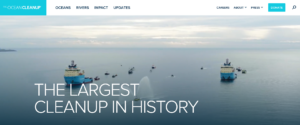The majority of carbon emissions are caused by large enterprises and organizations. It makes sense; Around 71% of global emissions come from 100 of the world’s largest companies. Larger organizations generate more waste, use more resources and energy, burning more fossil fuels, generating more waste, and inefficiently using more water and materials, creating an overall negative carbon footprint as a result.
More than a third of the world’s largest public companies now have targets to reduce their net greenhouse gas emissions to zero. By 2050, the UN intends to strive for net zero emissions, which will help slow the rise in global temperatures.
Having net zero emissions simply means that no new emissions will be added to the atmosphere. There are 2 approaches to realize this: a) either emissions can be decreased or b) new emissions can be balanced by allowing natural carbon sinks like forests and oceans to absorb.
Greenwashing
Since there are restrictions on natural offsets, it is unclear how nations and businesses will reach their commitments. If businesses do not supplement targets with appropriate governance and transparency procedures, they run the risk of being accused of “greenwashing” the act of giving the false appearance that a company’s products are more environmentally friendly.
Although setting goals is the first stage, there must also be specific plans for how the reductions will be accomplished.
Many people haven’t revealed their game plan or the short-term metrics they’ll use to gauge their success. The majority of experts contend that this number should also include “scope 3” emissions, which are the climate pollution from suppliers’ factories, customers using the products, and other parts of the value chain. Companies also frequently withhold information about what they consider to be “their” emissions.
Companies also want to rely heavily on carbon offsets as opposed to lowering emissions directly. Fewer than 2% of businesses with net zero targets indicate they won’t employ offsets, while about 40% say they will; the remaining businesses haven’t yet been clear about their strategies.
How Your Business Can Take Action
Almost two-thirds of businesses surveyed said they don’t see net zero targets as a high priority, although nearly half said their customers are worried about the environment.
Experts have cautioned that inaction might lead to social and economic catastrophes such as alarmingly high levels of hunger throughout the world, problems associated with mass migration, the collapse of international financial markets, and more causing business executives to reevaluate the goals and priorities of their companies.
1. Zero Waste
The production, transportation, consumption, and disposal of materials, which make up how we currently do business, are responsible for 42% of the greenhouse gas emissions in the United States. Implementing a zero-waste strategy is a powerful move that can benefit the environment right away.
An evaluation of your company’s present waste creation, management, and disposal practices is the first step in moving toward zero waste. You can determine where waste is produced, how frequently it occurs, and where it goes. From there, establish policies to achieve waste reduction, prevention, and diversion targets. Focus on reducing, reusing, and recycling while creating waste-reduction plans.
Going paperless whenever possible, recycling used office supplies, and reusing packaging materials are good examples of zero-waste approaches. Offices should prioritize refilling and recycling ink and toner cartridges because they are incredibly resource-intensive to make and take thousands of years to decompose.
2. Utilize Green Energy Sources
In recent years, the use of renewable fuels has increased significantly, partly as a result of rising oil and gas prices and escalating concerns about climate change. Given the limited availability of fossil fuels and the likelihood of international climate change regulation, businesses should start monitoring and lowering their energy usage immediately. This will not only improve the environment, but it will also provide a competitive advantage when climate policies are implemented.
Utilizing green energy sources like solar power will save money long term, even though taking action could involve an initial expenditure. Consider obtaining renewable energy from your power provider if you don’t own your property or have a small amount of space. Some power companies give customers the choice to purchase “green” services for a fee.
3. Engage and Educate
Actively involving your team in reducing or eliminating your footprint is one of the most effective strategies to increase workplace carbon accountability. It’s easy for people to succumb to climate despair – the sense of helplessness that prevents us from meaningfully solving environmental issues – because of bleak projections and continual corporate greenwashing.
Make carbon accountability personal to your team in order to raise awareness about it, prevent environmental discouragement, and assist workers in realizing their own ability to bring about meaningful change. Employees are less likely to object to new eco-conscious practices when they understand why they are being asked to change ingrained behaviors.
Encourage input on workplace energy-saving solutions during staff meetings to motivate your team members to take ownership of their carbon footprint. Consider implementing a corporate matching program to match employee donations to environmentally friendly nonprofits.
Capitalism and nature do not need to compete. By reducing your company’s carbon footprint, you can lower energy expenses, boost staff morale, establish your brand as a leader in sustainability, and boost your bottom line while preserving the resources that are necessary to live.
Big Drop’s Portfolio: Helping to Create a More Sustainable World
Digital remains an effective channel in terms of conveying the importance of the ongoing efforts by many companies in creating a more sustainable future.
Freepoint Eco-Systems
One of Big Drop’s clients, Freepoint Eco-Systems is just one instance of the shared ambition of reducing waste. The company leverages highly advanced recycling technology designed to process plastic that otherwise would not be recycled, and without intervention would be sent to landfills. Their digital presence is used as a powerful way in which they demonstrate their commitment to sustainability and exactly how the problem can be addressed.
The Ocean Cleanup
Another one of our clients, The Ocean Cleanup, develops and scales technologies to rid the oceans of plastic. The Ocean Cleanup is a non-profit organization developing and scaling technologies to rid the oceans of plastic. To achieve this objective, they work on a combination of closing the sources of plastic pollution and cleaning up what has already accumulated in the ocean and doesn’t go away by itself.

Wave of Change
Our client, Wave of Change, is Iberostar’s pioneering responsible tourism movement to move towards a circular economy, promote the responsible consumption of seafood, and improve coastal health. Their mission is simple – to tackle the ocean’s biggest challenges by using the strengths of the tourism industry and private sector to scale solutions. In doing so, they have built a more resilient business and more resilient destinations to enjoy for generations to come.
Check out our portfolio to see how our NYC web design company assisted these companies with their digital presence.


